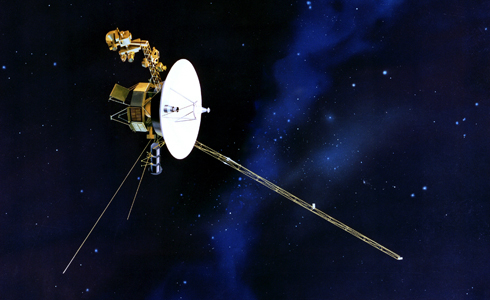Weekly Science Picks

Hello everyone. I hope you’ve all had a good week! It’s a balmy Autumn evening here in the UK where I sit as I write this – and I must say, this week’s science picks include something quite historic…
Anyone with half an eye on the science news recently should know by now that it’s been officially confirmed that NASA’s Voyager 1 probe is has now been confirmed as being in interstellar space. It is no longer within the Sun’s heliosphere and no longer feels the solar wind. To Voyager, the Sun is now simply another star in the sky. Though as Phil Plait points out, being in interstellar space is not technically the same thing as leaving the solar system.
Voyager 1 Reaches Interstellar Space. But Has It Left the Solar System? Wellllll…
However, there’s more to our solar system’s far-flung suburbs than errant electrons and protons. Even out there, over 120 times farther from the Sun than the Earth’s orbit, there are more substantive objects: huge, frozen chunks of ice that are essentially giant comets… It’s like walking outside the front door of your house and saying you’ve left your property. While you’ve left your house, there’s still the yard all around you. You have a ways to go yet.
Citizen Science has been around for a while now, as a fun and interesting way of getting internet users to casually help scientists analyse vast amounts of data. So the latest idea is to use online gaming and social media platforms like Facebook to bolster the effort…
How Facebook and gaming could help scientists battle disease
One example, a smartphone game set for release later this year, is currently called “GeneGame”. Players of the game, developed by Cancer Research UK, will be contributing to the identification of cancer-causing genetic faults from tumour samples. In a crucial difference to the Galaxy Zoo experiment, the scientific research will be a indirect consequence of the gameplay, rather than the explicit focus of the gameplay.
From a long departed craft, to one of the most recent, NASA’s LADEE vehicle is currently en route to the Moon, to study its tenuous atmosphere (and the word “Atmosphere” is used rather loosely here, believe me). But as the probe was launched, there was an unfortunate amphibian casualty. You see, the launch pads at NASA’s Wallops facility are built in rather swampy areas…
Frank the Frog Sacrificed Himself for LADEE Launch
From NASA: “A still camera on a sound trigger captured this intriguing photo of an airborne frog as NASA’s LADEE spacecraft lifts off from Pad 0B at Wallops Flight Facility in Virginia. The photo team confirms the frog is real and was captured in a single frame by one of the remote cameras used to photograph the launch. The condition of the frog, however, is uncertain.”
A lot of particle theorists work on things concerning strings. Coincidentally, so do a lot of musicians. And while a superstring may not seem to have much in common with a violin string, the concept of harmony is actually common to both science and music. Jenny Winder elaborates…
Strings attached: Harmony in the universe through music and physics
World renowned physicist, Albert Einstein was also an enthusiastic violinist. He was taught to play from an early age but only truly feel in love with he violin when at the age of 13 he discovered the music of Mozart. “Life without playing music is inconceivable for me,” he once said. “If I were not a physicist, I would probably be a musician. I often think in music. I live my daydreams in music. I see my life in terms of music.”
And finally, remember that you don’t always know whatever it is you think you know. Kelly Oakes at Buzz Feed gives us 13 science myths which a lot of people think are true – but aren’t!
13 Science Myths You Probably Believe
All those things you’ve been told? They’re not true.
I hope you have a good week!
Image: Artists impression of one of the Voyager craft. Credit: NASA/JPL
Hammonds M (2013-09-15 08:06:07). Weekly Science Picks. Australian Science. Retrieved: Jul 04, 2025, from http://ozscience.com/news/weekly-science-picks-46/
 Follow
Follow